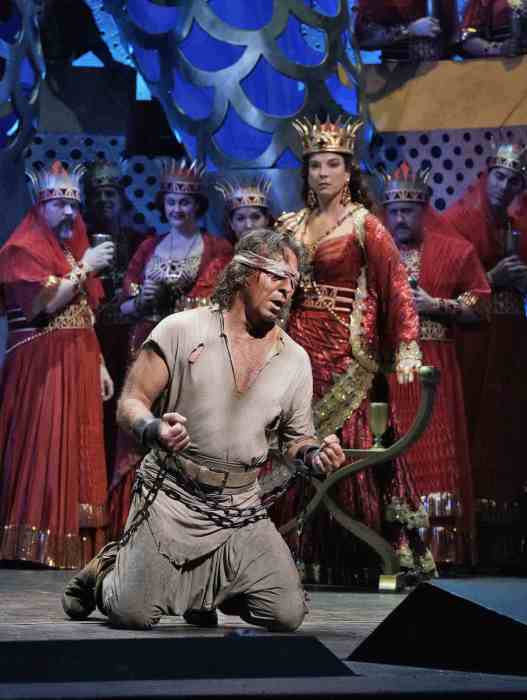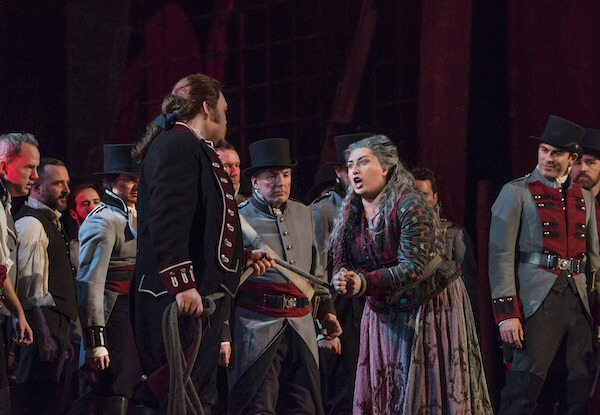Georges Bizet’s “Carmen” is the “C” in the operatic “ABC” triad of most popular works. While “Carmen” has totaled more than 1,000 performances at the Metropolitan Opera, this season’s New Year’s Eve premiere of Bizet’s “Les Pêcheurs de Perles” marked only its fifth Met performance and the first since the 1916-17 season.
Bizet’s youthful exercise in exotica has been performed in New York in two productions by the New York City Opera and in concert by the Opera Orchestra of New York. It’s also been performed in regional houses. Still, while most listeners have heard the tenor-baritone duet “Au fond du temple saint” many times in concert and on recordings, the opera itself is unfamiliar.
Bizet wrote the opera in 1863 when he was only 25 on a commission from the Théâtre Lyrique, which was sponsoring new operas by young composers. The melodic inspiration, evocative orchestration, and dramatic touches of Bizet’s score foreshadow his greater achievement a decade later with “Carmen.” Young, untried composers generally don’t have the benefit of good librettos, and “The Pearl Fishers” has a contrived, overfamiliar plot concerning a romantic triangle of two fishermen in love with a Hindu priestess vowed to chastity. The story seems to run out of steam in Act III, with a tacked-on happy ending. The setting in ancient Ceylon (modern Sri Lanka) played into the craze then for Orientalia. The story seems to take place in a kind of mythical exotic “Operaland” of palm trees, ruined temples, and starry skies.
Bizet’s “Pearl Fishers” a Met triumph on New Year’s Eve
Penny Woolcock’s production originated at the English National Opera in 2010, garnering poor reviews. It underwent revisions in a 2014 revival and was unveiled at the Met on the last day of 2015. Woolcock evidently got third-time lucky –– cheers overwhelmed a few scattered boos when the production team took their curtain call. The setting is updated to the latter part of the 20th century in a seaside shantytown somewhere on the Indian coast. Kevin Pollard’s costumes for Leïla and Nourabad are colorfully traditional, while those for Nadir, Zurga, and the chorus are more modern. The beauty and potential destructive power of the ocean are omnipresent; almost every scene is dominated by water suggested by rolling cloth or video projections (by 59 Productions). During the prelude, deep sea divers swim the watery depths searching for the titular pearls. Jen Schriever’s lighting is atmospheric, evoking light reflected on water. The sets by Dick Bird are temporary dock-like structures of recycled wood and corrugated metal. A pervasive sense of rural poverty, social isolation, the dominance of religion, and vulnerability to the forces of nature creates an environment where the story has human reality. The loss of picture book romanticism is a gain in dramatic verisimilitude.
The first scene did have me worried –– choristers milling around reading newspapers and smoking while Zurga and his minions are canvassing for political office. However as the plot progresses, it focuses more on the intimate human drama of the three main protagonists. The updating became irrelevant and Woolcock’s intelligent personal direction fully exploited the strengths of a talented trio of star singers.
As Nadir, Matthew Polenzani sang his dreamy arias and duets with elegant musicality and a bewitching command of French vocal style and tone production. The hypnotic romance “Je crois entendre encore” ended with an endlessly floated high C in mixed head voice –– a style of singing that has seemed to survive only on century-old Pathé 78 shellac recordings rather than on modern opera stages.
As Leïla, Diana Damrau sounded vocally restored –– her silvery, brilliant soprano precisely navigated the florid music but gained color and depth in the dramatic duets of the second and third acts. In fact, Leïla’s third act confrontation duet with Zurga, “Je frémis, je chancelle,” emerged as a vocal and dramatic highlight of the evening. Damrau’s sung French is excellent and she is a committed, positive performer.
Mariusz Kwiecien’s naturally handsome voice and presence should be a good fit for Zurga. But Kwiecien still attempts to puff up his lyric baritone by clamping a dark cover on his tone while pushing for volume. Luckily the role isn’t excessively heavy or high-lying. When Kwiecien lightened up, his singing improved.
Native Frenchman Nicolas Testé, who is married to the prima donna, imbued the priest Nourabad with a mellow soft-grained bass-baritone and a handsome brooding presence.
Gianandrea Noseda conducts with driving rhythmic force, dramatic propulsion, and vibrant color. Noseda’s musical interpretation and Woolcock’s production revealed the muscular strength in Bizet’s opera as well as its fragile decorative charm.



































